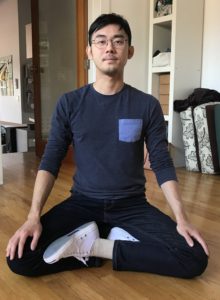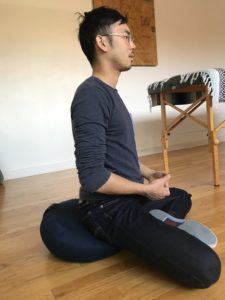Chronic ongoing pain is of course the most obvious sign. But there are other not-so-subtle messages your body gives you when it needs more care and attention.
Anxiety
Dislike of you own body

Sleeplessness
Exhaustion
An Inability to Relax
Fidgetiness
Grouchiness or Short Temper
No Desire to Socialize
No Desire to Get Out of Bed
Can’t Exercise
And more….
The biggest problem I observe is that most people are not listening to the screams or cries for help from their bodies. They push through, take pain medications, don’t rest, work harder and scream back a their bodies.
This aggressive approach to the body does not heal pain. Your kinesthetic sense, aka your body awareness, is a messenger. If you are in the habit of not listening to your body, you will only become aware of hurting yourself at the end of the day when you are tight, can’t move, and even breathing feels difficult.
Sooo… What’s the solution, Sharon? (Click on the photo for a video demonstration)
In every Alexander Technique session, I have my clients spend time in Semi-Supine position (laying on back with knees bent). During this time, my client is learning how to listen to their body, how to quiet and calm the nervous system, and how to release muscular tension related to their response to pain.
Semi-Supine is supportive of a long spine, a balanced body, and free and easy breathing. This makes learning to listen to your body easier. Sometimes, just in the act of spending quiet, still, awake time with your own body, pain messages can quiet down and you experience stress relief as well. Ignoring the “screams” from your body ensures that your body will get “louder” meaning stronger pain sensations and more discomfort.
Alexander Technique offers a kinder and gentler approach to the body. You learn to move gently and with mindfulness. You learn to be aware of how you are moving your body and how you are holding painful patterns of tension so that you can release them. With the gentle hands-on guidance, you learn to soothe yourself and soothe your body.
As you go through your day, take the time to STOP and listen to your body. Follow your body’s guidance. It is time for a kinder, gentler approach to our bodies. If this sounds right to you, then sign up for our free video series:
As you go through your day, take the time to STOP and listen to your body. Follow your body’s guidance. It is time for a kinder, gentler approach to our bodies. Want to live fully and breathe for life? Train in the Alexander Technique.


